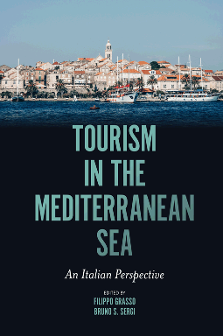
Index
Tourism in the Mediterranean Sea
ISBN: 978-1-80043-901-6, eISBN: 978-1-80043-900-9
Publication date: 1 March 2021
Citation
(2021), "Index", Grasso, F. and Sergi, B.S. (Ed.) Tourism in the Mediterranean Sea, Emerald Publishing Limited, Leeds, pp. 321-330. https://doi.org/10.1108/978-1-80043-900-920211022
Publisher
:Emerald Publishing Limited
Copyright © 2021 by Emerald Publishing Limited
INDEX
- Prelims
- Chapter 1 Tourism for All: Economic Opportunities and Territorial Constraints for Sustainable Development
- Chapter 2 Archaeological Research, Dissemination of Knowledge, and Touristic Valorization in a Multi-Layered City. The Example of Taormina, Sicily
- Chapter 3 The Role of Sustainability for the Tourism Recovery in Italy
- Chapter 4 A New Sustainable Way…Together: The Ancient Routes in Sicily
- Chapter 5 Religious tourism and Sustainability: From Devotion to Spiritual Experience
- Chapter 6 Place Awareness and Community Tourism: The Case of Sambuca di Sicilia
- Chapter 7 Tourism Competitiveness in Mediterranean Countries: A Quantitative Approach
- Chapter 8 Consuming Gastronomy While Travelling: What Do Tourists Want?
- Chapter 9 Tourism Planning and Resilience Strategies in Inner Areas: Communities in Action in the Madonie Area
- Chapter 10 Tourism, Economic Growth and Sustainability in the Mediterranean Region
- Chapter 11 Responsibility and Sustainability in International Hotel Chains
- Chapter 12 Sustainable Accommodation in a Fragile Tourist Destination: The Matera Case
- Chapter 13 For a Responsible, Sustainable and Inclusive Tourism
- Chapter 14 Roots Tourism: Opportunities for the Territories Deriving from Identity Journeys of Italian Emigrants
- Chapter 15 Eco-sustainable Routes and Religious Tourism: An Opportunity for Local Development. The Case Study of Sicilian Routes
- Chapter 16 Transport and Tourism Relationship
- Chapter 17 Connecting Locals and Visitors: The Case of Street Food
- Chapter 18 Tourism, Transport and Sustainability
- Chapter 19 The Economic Resilience of the Urban Destination in Sicily (Italy)
- Chapter 20 Italy’s Island Systems: Competitiveness in the Mediterranean Context
- Index